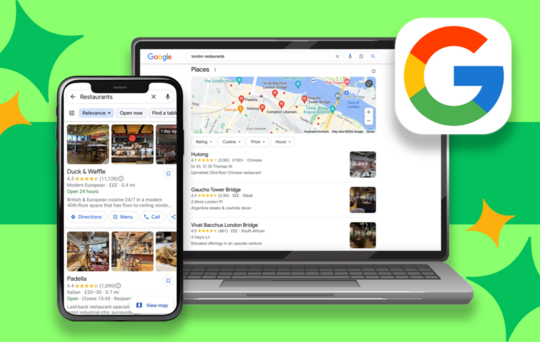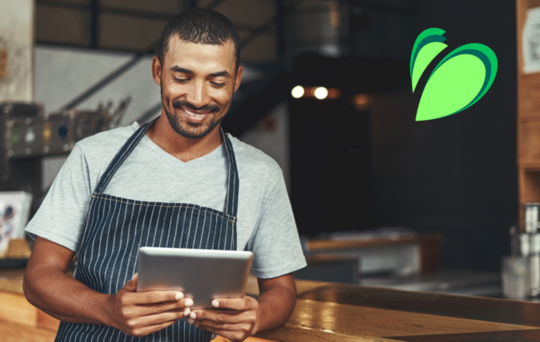10 tips to increase occupancy at your restaurant

- • What is restaurant occupancy rate?
- • Optimise your digital profiles
- • Offer promotions
- • Participate in special events to increase reservations
- • Optimise occupancy based on restaurant capacity
- • Determine the average time of your service cycle
- • Try TheFork Manager today
- • Increase occupancy by doubling table turns
- • Use a digital floor plan to organise occupancy
- • Manage reservation availability so you always have full tables
- • Activate a waiting list so you don't lose any customers
- • Reduce no-shows to avoid empty tables
- • Empty tables and ever-increasing costs?
Increasing your restaurant's average occupancy rate is a key task for managers hoping to keep their businesses in the black. While not always intuitive given all the variables that affect table occupancy, new technology is making it far easier for the industry to evolve, making high occupancy levels a regular occurrence without heavy investment.
Here you can find our step-by-step guide to gradually optimise the occupancy rates of your restaurant!
What is restaurant occupancy rate?
A restaurant’s occupancy rate is a metric that helps restaurateurs determine how many tables customers can sit at during a certain time period. To calculate it, you need the total number of available seats in your restaurant. Then, multiply this figure by 100.
Increasing the average occupancy rate of your restaurant will enable you to generate more revenue. To maintain growth over time, it is essential to leverage social media communications, pricing and marketing strategies. Both your online reputation and revenue management will benefit from it, and you will be able to boost your profitability for long-term success.
Optimise your digital profiles
Do you want to fill tables? Nowadays, restaurants are expected to establish a strong online presence across multiple channels as part of any marketing strategy. To achieve this, be sure to have:
- A Google My Business page for your restaurant, so customers can find you, especially on Google Maps.
- Add a reservation button to your website, Facebook and Instagram profiles. Plus, add a button on your business’ TripAdvisor page.
- Update your restaurant’s profile on TheFork and TripAdvisor to receive bookings regularly.
Have you already created your TheFork profile? If not, why wait?
Click here to activate all these advantages.
Offer promotions
Another pricing strategy that is always sure to attract guests is an appealing promotional offer. Offering a discount is a surefire way to attract customers that may have otherwise gone elsewhere. TheFork can help you reach customers wherever they are and communicate your special deals to them. Promotions can also help boost your reservations when you need them the most.
For instance, you could offer a 30% menu discount to a limited number of bookings when business is slow. You can also join TheFork rewards program, which allows customers to earn a $20 voucher they can spend in a partnered restaurant.
Contact your TheFork advisor to get started.
Participate in special events to increase reservations
A restaurant’s yearly calendar is full of events that can contribute to reaching your high occupancy rate goal. Valentine's Day, Mother's Day, and Christmas are special occasions for you to pull out all the stops and attract potential guests to your tables.
TheFork Festival can also help you with that. This exclusive series of events are specially created by TheFork to enable restaurants to fill each seat at any time of the year. We encourage dining establishments to offer discounts to customers to enhance their online reputation and boost their advertising campaigns.
This is the power of a well-thought-out marketing strategy!
Optimise occupancy based on restaurant capacity
Once you have applied the most suitable marketing strategies to attract more guests, it is time to take other steps to optimise occupancy, and increase it long-term.
Firstly, calculate the business's actual capacity in terms of usable production space. From this, you can figure out how many customers you can serve.
This information is crucial, as it will guide you in increasing your average occupancy rate properly.
Determine the average time of your service cycle
Armed with a clear idea of how many customers you can manage, you should be able to calculate the average service cycle. This term refers to the estimated time every guest needs to complete the dining experience, from the moment the customer walks into the restaurant until they leave.
Thanks to this insight, you will know exactly how many parties you can serve during each shift, increasing the overall occupancy rate.
Try TheFork Manager today
Increase occupancy by doubling table turns
If you are aware of the business's production capacity and the average service cycle, you have the power to double your table occupancy rates — as well as your profits. In other words, you can plan to occupy each table two or even three times per shift, doubling their output.
Do you already do this in your restaurant? It is a very common and effective technique to boost table turnover and serve twice as many customers during business hours.
Use a digital floor plan to organise occupancy
Do you have all your parties reserved? Great!
That said, it won't do you any good to have enough customers to fill the tables if you cannot manage the occupancy rate properly. It is important to organise reservations well based on tables and times. You also need to be able to adjust occupancy in light of unforeseen circumstances.
For this, we believe the best solution is to use a digital floor plan that allows you to handle and change all reservations in real-time, so you have better control.
Manage reservation availability so you always have full tables
Another way to achieve a high restaurant occupancy rate is to display your reservation availability online and offer dynamic promotions based on occupancy rates.
Are you having trouble filling tables on Monday nights? Offer a 30% discount and increase available bookings for this time on your TheFork profile.
Do you find it impossible to fill tables in the first week of January? Activate a special New Year’s promotion to enhance your reservations during this time period.
This is a very effective way to modify the number of online reservations available and use them to your favour.
Activate a waiting list so you don't lose any customers
What if these marketing and pricing strategies garner more reservations than tables available per shift? You don’t have to lose them!
With TheFork, you can activate a digital waiting list that allows customers to sign up to receive a notification when the restaurant has tables available again. This is a great feature for restaurants and customers alike because dining establishments can make the most of all the bookings they receive while guests have a higher likelihood of eating at the place they selected.
Reduce no-shows to avoid empty tables
Last but not least, we encourage you to take certain actions to prevent tables from ending up empty because of no-shows.
For example, with TheFork you can unlock an automatic reminder and a mass SMS confirmation for reservations, to reduce no-shows by forgetful customers as much as possible. Thus, you are more likely to achieve a guaranteed table occupancy rate while enhancing customer engagement with the restaurant.
Do you still have empty tables after following these tips? No chance! We are convinced that, by following these steps, you'll be doing everything you need to do to increase your occupancy effectively long-term, which is what matters. It's worth it!
Empty tables and ever-increasing costs?
- What is restaurant occupancy rate?
- Optimise your digital profiles
- Offer promotions
- Participate in special events to increase reservations
- Optimise occupancy based on restaurant capacity
- Determine the average time of your service cycle
- Try TheFork Manager today
- Increase occupancy by doubling table turns
- Use a digital floor plan to organise occupancy
- Manage reservation availability so you always have full tables
- Activate a waiting list so you don't lose any customers
- Reduce no-shows to avoid empty tables
- Empty tables and ever-increasing costs?














